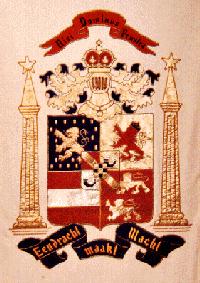

|
Incorporated as There was a congregation before there was a minister, before there was a church. From the time the first settlers had arrived in New Amsterdam, limited religious services conducted by laymen had been held in an empty loft room above the Dutch colony's grist mill, in a location on what is now William Street.With the April 7, 1628 arrival of an ordained minister, Dominie Jonas Michaelius, and the selection of the first Consistory, the Collegiate Church was born in the new world. This 1628 date marks the founding of the oldest Protestant body in America with a continuous history of service. But for the first five years of the Collegiate Church, services continued to be held above the grist mill. 
In 1633 the first church ever built in New Amsterdam was constructed to replace the loft services. This church, facing the East River, was a plain wooden building, with a gambrel roof and no spire, on a lane that is now Pearl Street. Nearly ten years later, it was replaced by a stone church built within the walls of the Fort. The church's spire and weathercock towered over the walls of the fort, so that they were the first sight seen as ships sailed into the harbor of New Amsterdam. This church, however, was in time taken over by the British to serve as a military garrison. To replace it, the Garden Street Church was built in 1693, in what is now Exchange Place. On May 19, 1696, King William III of England granted a full charter to the Dutch Church in America. This royal charter established the Collegiate Church firmly on American soil. The charter not only served to give the church a new sense of security, it set the stage for further expansion. As one church became crowded, a larger church was built to replace the old; as new areas of the colony became settled, churches were built to serve the new communities. An example of such growth is the establishment of the original Middle Collegiate Church, on Nassau Street near Cedar in 1729. A North Church was added in 1769, to serve a growing congregation. In 1839, a second Collegiate Church was built on Layfayette Place, as the churches continued to move uptown with the population. With the building in 1854, at the corner of Fifth Avenue and 29th Street, of a church known variously as the Fifth Avenue Collegiate Church, the 29th Street Church, and finally as Marble Collegiate, we come to the oldest building of our current four Collegiate Churches in Manhattan. The new Middle Church (at Second Avenue and Seventh Street) and the West End Church (at West End Avenue and Seventy-seventh Street) were built in 1891 and 1892 respectively. The newest Collegiate Church in Manhattan is the Fort Washington Church, dedicated in 1909. These are the four Collegiate Churches of today. |
| Back to Collegiate Charter Tercentenial Page |
|---|
| An Historical Sketch of the Early Reformed Church |
| The Reformed Church in America Home Page |